To install a generator with existing solar panels, follow these steps: connect the generator to the solar inverter using a transfer switch, ensure the generator and solar panels are grounded properly. Looking to expand your renewable energy system?
Wondering how to integrate a generator with your existing solar panels? In this guide, we will provide you with simple steps to follow when installing a generator alongside your solar panel setup. By following these steps, you can ensure a smooth and efficient integration of your generator while maximizing the benefits of your solar power system.
Let’s dive in and explore the process of installing a generator with existing solar panels.
Assessing Your Power Needs
Determining the power requirements of your household
Before installing a generator with your existing solar panels, it’s crucial to assess the power needs of your household. Your power needs can vary depending on factors such as the size of your home, the number of appliances, and your electricity usage patterns. To accurately determine your power requirements, follow these steps:
- Take inventory: Identify all the appliances and devices that consume electricity in your home. This includes essential appliances like refrigerators, air conditioning units, water heaters, as well as smaller devices like televisions, computers, and lights.
- Check the power ratings: Look for the power rating or wattage information on each appliance. This is usually indicated on a label or in the manufacturer’s manual. Jot down the power consumption in watts for each device.
- Estimate daily usage: Determine how many hours each appliance is typically used per day. Multiply the power consumption in watts by the number of hours to calculate the total daily energy consumption for each device.
- Add up the totals: Sum up the daily energy consumption of all appliances to get an estimate of your household’s total power requirements.
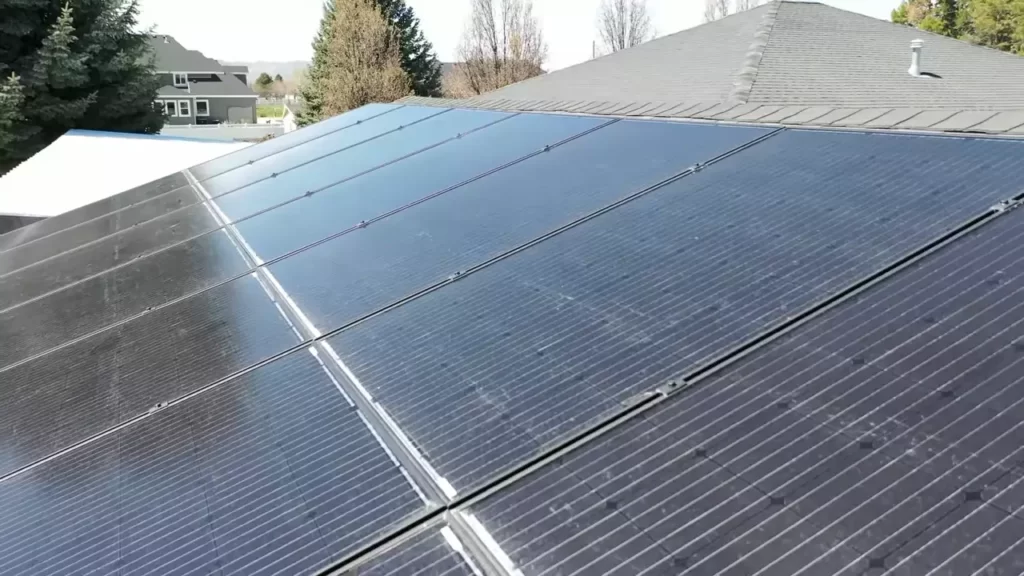
Evaluating the capacity of your existing solar panel system
Once you know your power requirements, the next step is to evaluate the capacity of your existing solar panel system. Your solar panels generate electricity by converting sunlight into usable energy. To assess the capacity:
- Check the specifications: Refer to the documentation or user manual provided by the solar panel manufacturer.
- Find the panel’s wattage: Look for the panel’s maximum power output or its wattage rating. This will indicate the amount of electricity it can generate under optimal conditions.
- Consider factors like orientation and shading: The actual output of your solar panels may be affected by factors such as their orientation towards the sun, shading from nearby buildings or trees, and the angle of installation.
- Calculate the total output: Multiply the wattage rating of each solar panel by the number of panels in your system to get an estimate of the total electrical output.
Calculating the additional power needs that a generator can fulfill
Once you have assessed your power requirements and evaluated the capacity of your solar panel system, it’s time to calculate the additional power needs that a generator can fulfill. A generator can provide backup power during times when your solar panels are unable to meet the demand. To calculate the additional power needs:
- Subtract solar panel output from power requirements: Subtract the total electrical output of your solar panel system from the total power requirements of your household. This will give you the additional power that a generator needs to fulfill.
- Consider efficiency and usage patterns: Take into account the efficiency of the generator and the anticipated usage patterns during times when solar power is not available. Some appliances may have higher power demands and need to be prioritized during generator usage.
- Choose the appropriate generator size: Based on your additional power needs, determine the appropriate generator size that can adequately fulfill your requirements. This will ensure that you have enough backup power during power outages or periods of limited solar generation.
Choosing The Right Generator
When it comes to installing a generator with your existing solar panels, choosing the right generator is a crucial step. Understanding different types of generators, selecting one that complements your solar setup, and considering factors such as wattage, fuel type, and noise level are all important aspects to consider.
Understanding different types of generators
Before selecting a generator, it’s essential to have a clear understanding of the different types available. Here are the main types of generators:
- Gasoline generators: These are the most common type and are suitable for small-scale power needs. They are affordable and readily available but tend to be noisy and require regular fuel refills.
- Diesel generators: Diesel generators are known for their efficiency and longer lifespan. They are ideal for larger power requirements but may be more expensive to purchase upfront.
- Natural gas generators: Natural gas generators are reliable and provide cleaner emissions. They are often used for standby power systems and are convenient for areas with a natural gas supply.
- Propane generators: Propane generators are versatile and can be used as a primary or backup power source. Propane is readily available and has a long shelf life, making it an excellent option for emergencies.
- Solar-powered generators: These generators use solar panels to harness energy from the sun, making them eco-friendly and quiet. They are typically used for smaller power needs and can be a valuable addition to an existing solar setup.
Selecting a generator that complements your existing solar setup
When selecting a generator, it’s important to choose one that complements your existing solar setup. Consider the following factors:
- Wattage: Determine the power requirements of your home or business to select a generator with sufficient wattage. Assess the total wattage of your solar panels and any additional appliances you plan to power.
- Fuel type: Choose a fuel type that aligns with your preferences and availability. Consider factors such as fuel cost, accessibility, and environmental impact.
- Noise level: If noise is a concern for you, opt for a generator that operates quietly. Solar-powered generators are usually the quietest option, while diesel generators tend to be louder.
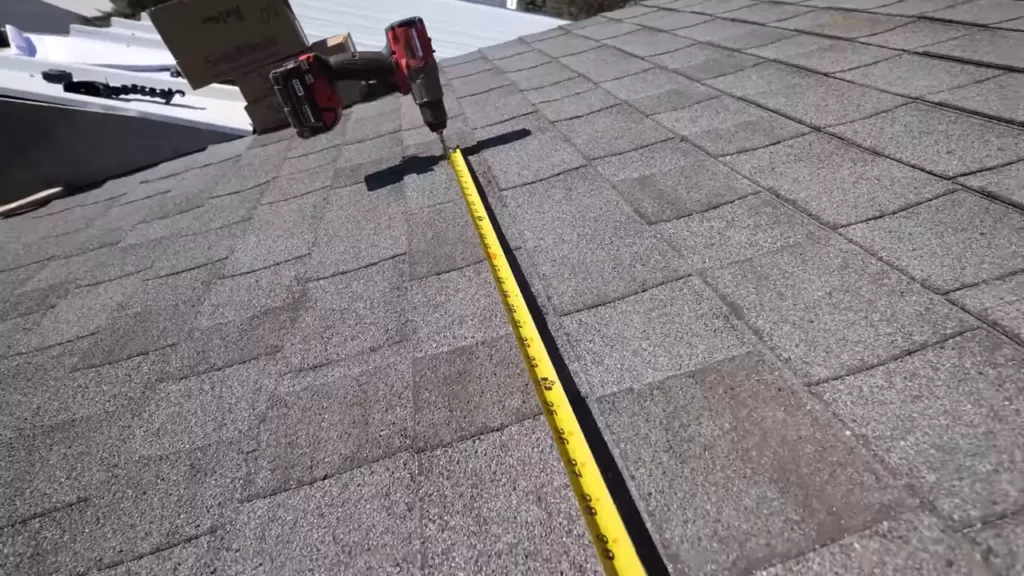
Considering factors like wattage, fuel type, and noise level
When installing a generator with your existing solar panels, it’s crucial to consider factors like wattage, fuel type, and noise level. By evaluating these aspects, you can ensure a seamless integration between your solar setup and the generator.
Once you have made your decision based on these factors, you will be well on your way to installing a generator that perfectly fits your needs and complements your existing solar panels.
Connecting The Generator To Your Solar Panel System
One advantage of having both a generator and solar panels is the ability to use them together to power your home during an outage or to maximize energy production. The process of connecting a generator to your existing solar panel system involves reviewing the electrical setup of your solar panels, identifying the appropriate connection point, and installing a transfer switch or interlock device for safe operation.
Reviewing the electrical setup of your solar panels
Before connecting your generator to your solar panel system, it is crucial to review the electrical setup of your solar panels. This involves understanding how your solar panels are connected to your home’s electrical system and identifying the main points of connection.
Here are the steps to review your solar panel’s electrical setup:
- Identify the main electrical panel or junction box where your solar power system is connected. This is typically the location where the power generated by your solar panels is fed into your home’s electrical system.
- Take note of the existing wiring and any circuit breakers associated with your solar panels. This will help you understand how the solar panels are integrated into your home’s electrical system.
- Ensure that you have a clear understanding of the electrical requirements and limitations of your solar panel system. This information can typically be found in the manufacturer’s documentation or by consulting a professional.
Identifying the appropriate connection point for the generator
Once you have reviewed the electrical setup of your solar panels, the next step is to identify the appropriate connection point for your generator. This connection point will allow you to seamlessly integrate your generator into your existing solar panel system.
To identify the appropriate connection point for your generator, consider the following:
- Locate a dedicated electrical outlet or circuit that is separate from the solar panel system. This outlet will be used to connect the generator.
- Ensure that the electrical outlet or circuit you choose can handle the power output of your generator. Refer to the generator’s specifications or consult a professional if needed.
- If necessary, install a generator inlet box near the chosen connection point. This will provide a safe and convenient way to connect your generator to your home’s electrical system.
Installing a transfer switch or interlock device for safe operation
To ensure the safe operation of your generator and solar panel system, it is essential to install a transfer switch or interlock device. These devices will prevent backfeeding of power into the electric grid and protect utility workers during an outage.
Here are the steps to install a transfer switch or interlock device:
- Consult a licensed electrician to determine the appropriate type of transfer switch or interlock device for your specific setup.
- Install the transfer switch or interlock device near your main electrical panel.
- Connect the generator input of the transfer switch or interlock device to the dedicated outlet or circuit you identified earlier.
- Connect the output of the transfer switch or interlock device to the circuits you wish to power during an outage.
- Test the transfer switch or interlock device to ensure it functions correctly and safely switches between the generator and the solar panel system.
By following these steps and installing a transfer switch or interlock device, you can confidently connect your generator to your existing solar panel system. This setup will provide you with a reliable and flexible power solution for your home.
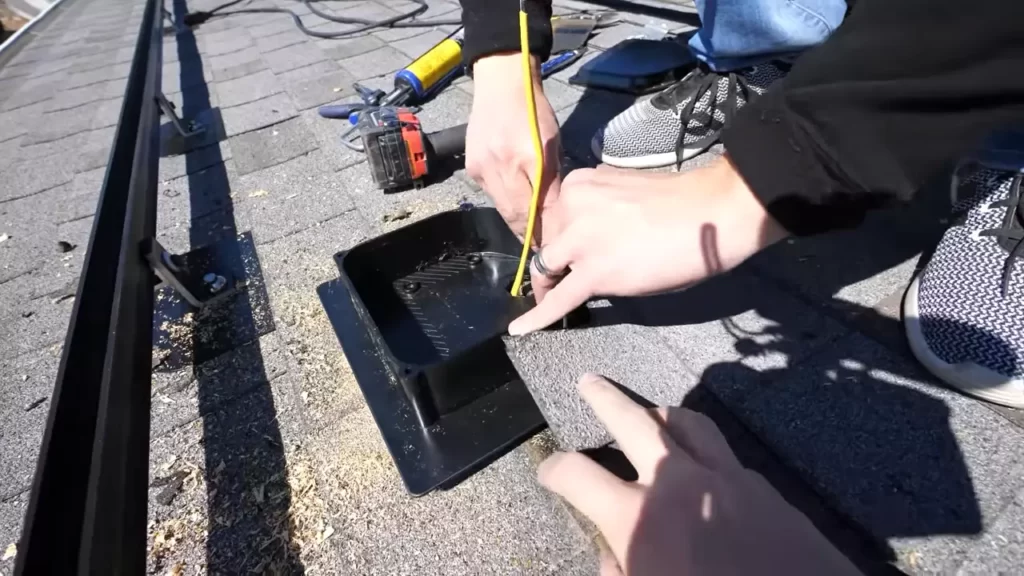
Wiring The Generator And Solar Panels
Configuring the Generator Input and Output Wiring
When it comes to wiring your generator and solar panels, proper configuration is essential to ensure smooth operation and maximize efficiency. In this section, we will guide you through the process of configuring the input and output wiring for your generator.
Firstly, it is important to identify the input and output terminals on your generator. Typically, the input terminals will be labeled as “Generator Input” or something similar, whereas the output terminals will be labeled as “Generator Output” or “AC Output”. Take a close look at your generator’s manual or consult the manufacturer’s website for accurate labeling information.
Once you have identified the input and output terminals, ensure that the generator is turned off and disconnected from any power source. Safety should always be a priority during this process.
To configure the input wiring, you will need to connect the generator’s input terminals to the appropriate solar panel terminals. This can be achieved by using suitable cables and connectors. Ensure that you follow the manufacturer’s guidelines for cable and connector type compatibility.
Similarly, for the output wiring, connect the generator’s output terminals to your home’s electrical system. This will require a transfer switch or an interlock device to safely connect the generator to your household circuits. These devices help prevent backfeeding and protect both the generator and your home’s electrical system.
Connecting the Generator to Your Home’s Electrical System
Connecting the generator to your home’s electrical system is a crucial step in the installation process. It ensures that your household appliances and devices can receive power during an outage or when the solar panels are not producing sufficient electricity.
Firstly, consult a licensed electrician to assess your home’s electrical system and determine the best way to connect the generator. They will help you choose the appropriate transfer switch or interlock device that adheres to local electrical codes and regulations. Compliance with electrical codes is vital to ensure the safety of your home and avoid any legal consequences.
Once the appropriate transfer switch or interlock device is installed, follow the manufacturer’s instructions to connect the generator’s output terminals to the switch or device. This generally involves making secure electrical connections and ensuring proper grounding.
After connecting the generator, test the system to ensure everything is working correctly. Start the generator and switch on a few essential appliances to verify that they receive power from the generator and not the grid. It is essential to ensure proper functionality before relying on the setup during an actual power outage.
Ensuring Proper Grounding and Compliance with Electrical Codes
Proper grounding and compliance with electrical codes are vital for the safety and performance of your generator and solar panel system. Grounding helps protect against electrical faults and reduces the risk of electrical shock.
To ensure proper grounding, consult a licensed electrician who can assess your specific installation and provide guidance on grounding requirements. They will determine the appropriate grounding method for your generator and solar panel setup based on local electrical codes and regulations.
Additionally, follow all electrical codes and regulations to ensure compliance. These codes are in place to protect you, your home, and your electrical system. Failure to comply with these codes can result in safety hazards and legal consequences.
Always consult a professional electrician if you are unsure about any aspect of the installation process. Their expertise and knowledge will help you set up your generator and solar panels correctly, ensuring safe and efficient operation.
Testing And Maintenance
Testing the functionality of the generator and solar panels is crucial to ensure that your system is working efficiently. Establishing a maintenance schedule for regular upkeep is equally important to prolong the lifespan of your equipment. This section will guide you on how to test your generator and solar panels, establish a maintenance schedule, and troubleshoot common issues that may arise.
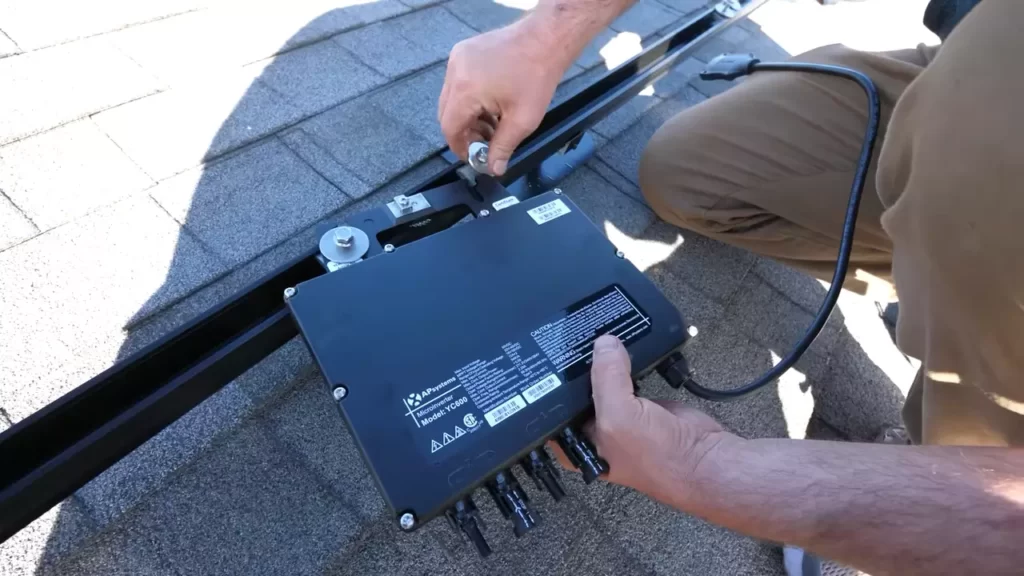
Testing the functionality of the generator and solar panels
Before relying on your generator and solar panels for backup power, it is essential to test their functionality. This ensures that they are ready to provide electricity when you need it the most. Here are the steps to test the generator and solar panels:
- Start by inspecting the physical condition of both the generator and solar panels. Look for any signs of damage or deterioration that may affect their performance.
- Check the fuel level in the generator and ensure it is sufficient for testing. If needed, refill the fuel tank.
- Connect the generator to your solar panel system according to the manufacturer’s instructions. Double-check all connections to ensure they are secure.
- Turn on the generator and monitor the power output. Verify that the generator is supplying electricity to your home or business.
- Observe the performance of your solar panels during this test. Ensure that they are generating power and charging the batteries effectively.
- Record the results of the test, including the output power of the generator and the performance of the solar panels. This will serve as a reference for future comparisons.
Establishing a maintenance schedule for regular upkeep
Maintaining your generator and solar panels regularly is crucial to avoid unexpected breakdowns and ensure their longevity. Here’s how you can establish a maintenance schedule:
- Create a calendar or schedule to keep track of essential maintenance tasks for both the generator and solar panels.
- Follow the maintenance guidelines provided by the manufacturers of your equipment. These guidelines often include specific tasks and intervals for maintenance.
- Schedule routine inspections to check for any dust, debris, or obstructions on the solar panels. Clean them if necessary, using a soft cloth and mild detergent.
- Inspect the generator for any signs of wear and tear, such as loose connections, leaks, or damaged parts. Replace or repair any faulty components.
- Change the oil and filters of the generator according to the manufacturer’s recommendations. Regularly check the fuel level and top it up if needed.
- Test the functionality of the generator and solar panels periodically to ensure they are still operating at optimum performance.
Troubleshooting common issues that may arise
Despite regular maintenance, you may encounter common issues with your generator and solar panels. Here are some troubleshooting steps to resolve these problems:
- Lack of power output from the generator: Check the fuel supply and ensure it is sufficient. Inspect the spark plug and replace if necessary. Verify the generator’s circuit breakers and reset if tripped.
- Decreased solar panel performance: Clean the panels to remove any dirt or debris. Confirm that the panels are properly positioned and receiving adequate sunlight. Check the wiring and connections for any faults.
- Intermittent power supply: Inspect all connections, cables, and wiring for loose or damaged parts. Test the batteries to ensure they are charging correctly. Check the inverter for any malfunctions.
- Unusual noises or vibrations: Examine the generator for loose parts and tighten if needed. Inspect the solar panels for any damage that could cause vibrations.
- Faulty automatic transfer switch: Test the transfer switch to ensure proper operation during power outages. Consult a professional electrician if necessary.
By following these testing, maintenance, and troubleshooting guidelines, you can ensure the functionality and longevity of your generator and solar panels. Incorporate these practices into your routine to have peace of mind during blackouts and maximize the benefits of your solar power system.
Enhancing Generator Performance With Solar Panels
When it comes to powering your home or business, a combination of generator and solar panels can offer a reliable and environmentally friendly solution. By integrating solar power into your existing generator setup, you can maximize energy efficiency, reduce reliance on fossil fuels, and even save money in the long run. In this article, we will explore the options for integrating solar power into your generator setup, and discuss the financial and environmental benefits of a hybrid system.
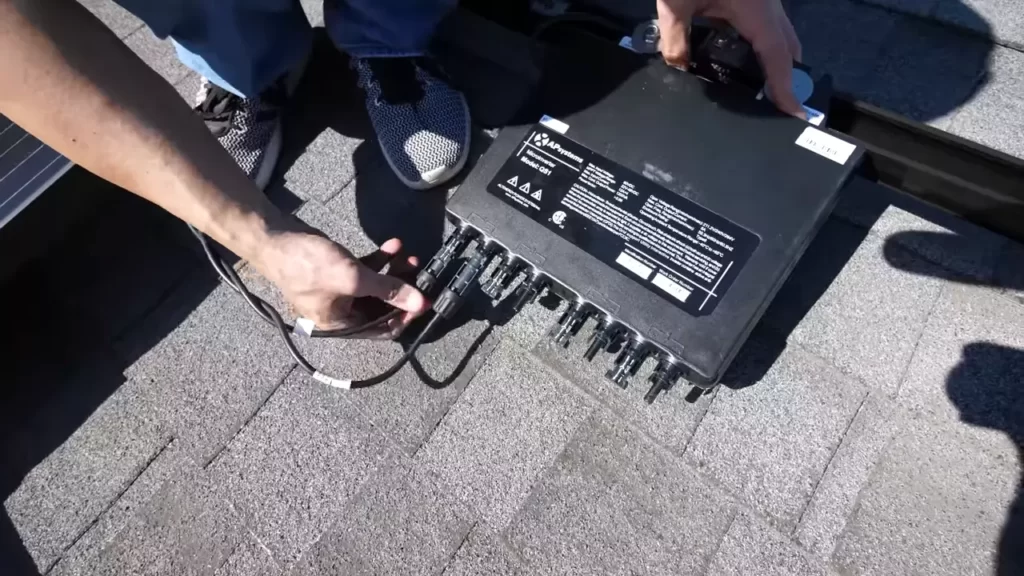
Exploring options for integrating solar power into your generator setup
If you already have solar panels installed, you can easily enhance your generator’s performance by connecting it to your existing solar system. There are a few options for doing this:
- Direct connection: In this setup, you connect the output of your solar panels directly to the input of your generator. This allows the generator to use solar power directly, reducing its reliance on fossil fuels.
- Battery charging: Another option is to use your solar panels to charge a battery bank. This stored energy can then be used to power your generator when needed, reducing the load on the generator and extending its runtime.
- Grid-tie system: If your solar panels are connected to the grid, you can utilize a grid-tie inverter to feed any excess energy back into the grid. This not only reduces your reliance on the generator but also allows you to earn credits or discounts on your electricity bill.
By exploring these options, you can find the best solution that suits your needs and existing setup.
Maximizing energy efficiency and reducing reliance on fossil fuels
Integrating solar power into your generator setup allows you to maximize energy efficiency and reduce your reliance on fossil fuels. Solar panels generate clean and renewable energy from the sun, which can significantly offset the amount of fuel your generator needs to burn.
When solar panels are providing power, the generator can operate at a lower output, resulting in reduced fuel consumption and lower emissions. This not only saves you money on fuel costs but also helps to minimize your carbon footprint.
Assessing the financial and environmental benefits of a hybrid system
A hybrid system that combines solar power and a generator can offer both financial and environmental benefits. Here are some key advantages:
| Financial Benefits | Environmental Benefits |
|---|---|
|
|
By assessing these benefits, you can make an informed decision about whether a hybrid system is right for you. Not only can it provide a reliable power source during outages or emergencies, but it also contributes to a greener and more sustainable future.
Safety Considerations And Best Practices
When installing a generator to work in conjunction with your existing solar panels, it is essential to prioritize safety. Understanding and implementing safety precautions will not only protect your investment but also ensure the well-being of your home and loved ones.
Understanding generator safety precautions
Prior to installing a generator, it is crucial to familiarize yourself with the necessary safety precautions. Generators can produce carbon monoxide, a colorless and odorless gas that can be harmful or even fatal if inhaled in high concentrations. To prevent this, it is essential to:
- Install carbon monoxide detectors in your home, especially near sleeping areas.
- Keep the generator at least 20 feet away from your living area, ensuring proper ventilation.
- Never operate the generator indoors, including inside garages or basements.
- Follow the manufacturer’s instructions regarding safe operation and maintenance of the generator.
Implementing proper ventilation and exhaust systems
Proper ventilation and exhaust systems are crucial when installing a generator. These systems help to redirect harmful gases away from your living space and maintain air quality. Here are a few guidelines to ensure proper ventilation:
- Install an exhaust pipe that directs the generator’s emissions away from the living area.
- Ensure the exhaust pipe is positioned at a safe distance from windows, doors, and vents.
- If using an enclosed space, such as a shed, ensure it has proper ventilation to allow the generator’s exhaust to dissipate.
- Regularly inspect the exhaust system for any signs of damage or blockage.
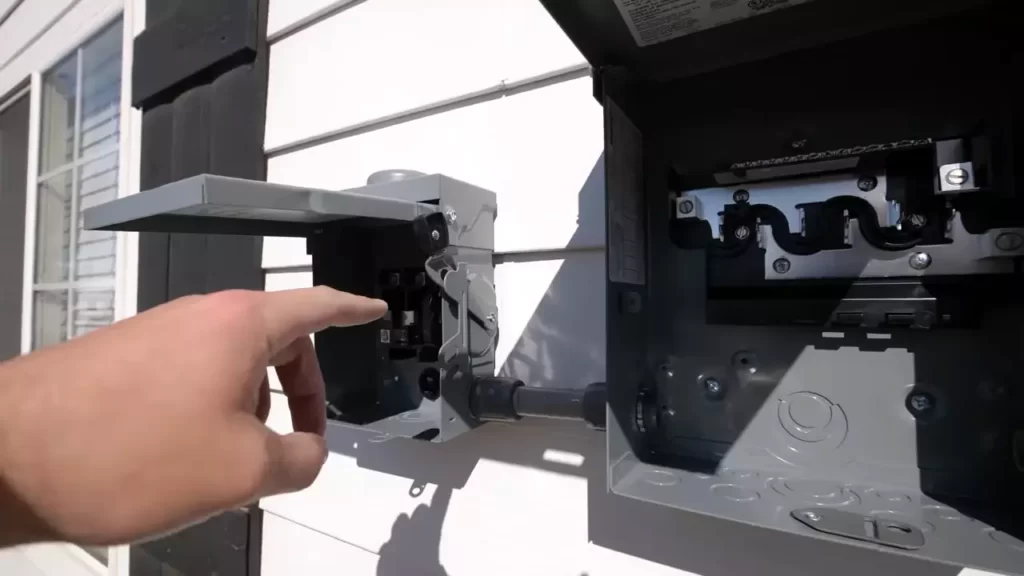
Following guidelines for generator operation during emergencies
During emergencies, it is important to operate your generator safely and efficiently. Adhering to the following guidelines will help prevent accidents and ensure the longevity of your generator:
- Always read and understand the manufacturer’s instructions for your specific generator model.
- Keep flammable materials away from the generator to minimize the risk of fire.
- Regularly inspect the generator and its components for any signs of wear or damage.
- Adhere to proper fuel storage and handling procedures.
- Install a transfer switch to ensure a safe and seamless switch between solar power and generator power.
By following these safety considerations and best practices, you can install a generator with your existing solar panels while prioritizing the safety of your home and loved ones.
Final Thoughts
Combining a generator with existing solar panels can provide you with a reliable and efficient power backup solution. However, it is important to consider the benefits and challenges of this setup as well as seek professional assistance to ensure a seamless integration. Additionally, responsible and sustainable energy practices are crucial in maintaining the integrity of your solar panels and generator, as well as reducing your carbon footprint.
Reflecting on the Benefits and Challenges of Combining a Generator and Solar Panels
When it comes to combining a generator with your existing solar panels, there are both benefits and challenges to consider. Let’s take a closer look:
| Benefits | Challenges |
|---|---|
|
|
Encouraging Readers to Consult Professionals for Assistance
If you are considering installing a generator with your solar panel system, it is advisable to consult professionals who specialize in renewable energy installations. These experts can guide you through the process, assess your energy needs, and recommend the most suitable generator model for your specific requirements. Their expertise can ensure a seamless integration, proper wiring, and compliance with safety regulations.
Emphasizing the Importance of Responsible and Sustainable Energy Practices
As we strive towards a greener future, it is crucial to prioritize responsible and sustainable energy practices. When combining a generator and solar panels, keep these practices in mind:
- Maintain and service your generator regularly to ensure optimal performance and minimize emissions.
- Carefully select a generator that aligns with your commitment to eco-friendly energy solutions. Look for options that use clean fuels or incorporate technologies that reduce environmental impact.
- Monitor and manage your energy consumption to optimize the usage of renewable energy from solar panels and limit reliance on the generator.
By following these practices, you can maximize the benefits of your generator while minimizing its environmental footprint.
Frequently Asked Questions Of How To Install Generator With Existing Solar Panels
Can I Hook Up A Generator To My Solar Panels?
Yes, you can connect a generator to your solar panels. It allows you to have a backup power source when the solar panels don’t produce enough electricity. However, it is crucial to use a transfer switch for safety and to prevent backfeeding.
How Do A Generac Generators Work With Solar Panels?
Generac generators work with solar panels by harnessing the energy they produce. The generator supplements solar power during times of low sunlight or high energy demand. This ensures a constant and reliable power supply.
Can I Charge From Solar And Generator At The Same Time?
Yes, you can charge from solar power and a generator simultaneously for increased energy generation. Combining these two sources allows for a more reliable and consistent power supply, ensuring uninterrupted electricity availability.
How Do You Charge A Generator With Solar Panels?
To charge a generator with solar panels, connect the panels to the generator using the appropriate cables. Position the panels in direct sunlight and ensure they are properly aligned. The panels will convert sunlight into electricity, which will then charge the generator.
Conclusion
Combining a generator with existing solar panels is a practical and efficient way to ensure continuous power supply. By following these simple steps and considering important factors like power capacity and system compatibility, you can successfully integrate these two power sources.
Remember to seek professional advice when needed and always prioritize safety during the installation process. With a generator and solar panels working together, you can enjoy uninterrupted electricity and reduce your dependency on the grid. Empower your home with a reliable and sustainable energy solution today!
